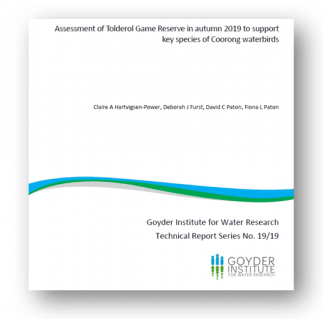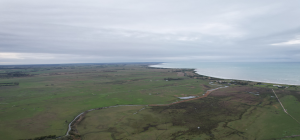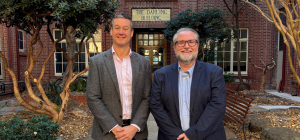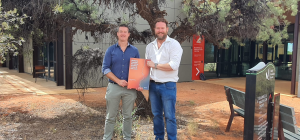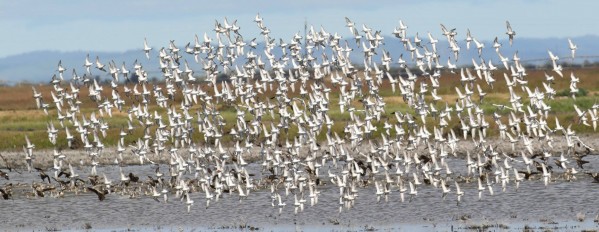
Research undertaken by the Goyder Institute has provided important knowledge for supporting the Australian and South Australian governments’ investment of $10 million to improve the quality and availability of waterbird habitat throughout the Coorong and Lower Lakes region. The funding will be used to construct small-scale infrastructure and other interventions at three priority wetland sites at Tolderol, Teringie and Waltowa to support shorebirds in the region by managing appropriate water levels and salinity to improve the extent, quality and duration of wetland inundation.
The Coorong and Lower Lakes region is renowned for its diverse and abundant waterbird community. Many shorebird species in the region have experienced substantial declines in abundances since the 1980s, in particular in the Coorong South Lagoon. Maintaining and improving the numbers of shorebirds using the Coorong and Lower Lakes region is of critical importance to preserve the region’s listing as a Ramsar Wetland of International Importance. Given that many wetland bird species are highly mobile, there is the potential to support key shorebirds within the Coorong and Lower Lakes region by restoring suitable supplementary habitat within the broader landscape at times of the year when the Coorong South Lagoon and other habitats are not suitable.
Research undertaken in 2019 by the Goyder Institute, led by Fiona and David Paton from The University of Adelaide, as part of ‘Phase 0’ of the Healthy Coorong, Healthy Basin Program, identified Tolderol, Teringie and Waltowa wetlands as the highest priorities in the Lower Lakes region for undertaking feasibility assessments to provide additional suitable habitat for key waterbird species. The work included an initial assessment of the potential for wetlands in the South East and Lower Lakes regions of South Australia to support key species of Coorong shorebirds.
Another study of the same project focussing on the Tolderol wetlands in more detail, assessed its potential value in providing suitable habitat for key waterbird species of the Coorong South Lagoon. To be an effective waterbird refuge for key waterbird species that have declined in the Coorong, Tolderol must provide suitable foraging opportunities for at least some of these species. Following an assessment of food resources and foraging behaviour, the study found that Tolderol wetlands provided suitable foraging opportunities during autumn 2019 and recommended investment into infrastructure to increase waterbird habitat availability. You can read further findings from the Goyder Institute report here.
Once the infrastructure at Tolderol, Teringie and Waltowa wetlands is in place, it is expected to significantly increase shorebird habitat of a similar type to that of the Coorong South Lagoon and Lower Lakes. This includes providing foraging areas for seven target waterbird species including the common greenshank, curlew sandpiper, sharp-tailed sandpiper and red-capped plover. The additional area of habitat will not be sufficient alone to offset the historical impacts on shorebirds, but it represents an important contribution to restoring habitat at larger spatial scales within the region.
The wetland infrastructure projects are part of the South Australian Government’s Project Coorong initiative, which is taking action to restore the health, vitality and visitor experience of the Coorong. This investment is part of the $77.7 million Healthy Coorong, Healthy Basin (HCHB) Program. This initiative of the Australian and South Australian governments aims to support the long-term health of the Coorong by providing evidence-based solutions to both immediate threats and future conditions under a changing climate. The Goyder Institute for Water Research is the delivery partner for research components of HCHB, providing independent research to inform future management decisions for the region. The outcome is supporting progress towards the goals of the Institute’s Strategic Plan 2020-2023, with the important goal of research impact and operating principle of undertaking demand-driven research that drives change to ensure long-term sustainability of water resources.
For further information on the Goyder Institute-led HCHB research activities, please click here or contact the Institute’s Research Program Manager, Dr Alec Rolston.
Further reports relating to informing management of the Coorong and Lower Lakes region, as well as HCHB research outputs can be found on the Goyder Institute website’s publications pages
